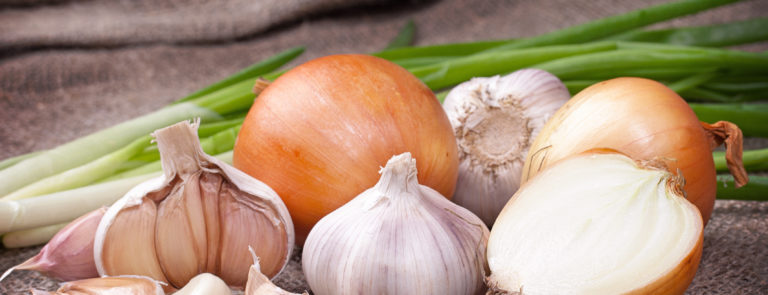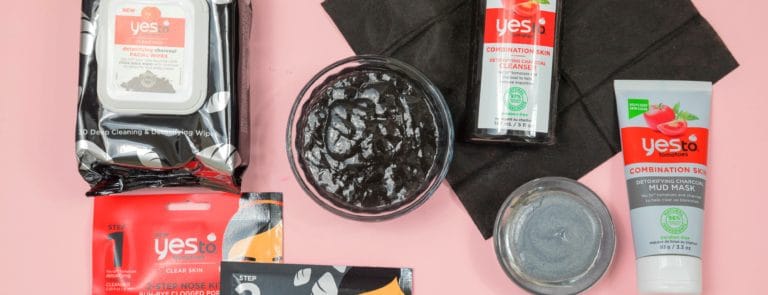15% off £20
IBS diet: Does the low FODMAP diet work for IBS?

Food is one common trigger for digestive conditions such as irritable bowel syndrome (IBS).
Avoiding high FODMAP foods is the cornerstone of some of the most common IBS diets.
But is it really worth cutting out those fermentable carbohydrates and following a low-FODMAP diet?
Let’s do some digging and find out!
What are FODMAPS?
FODMAPs are a collection of carbohydrates that contribute to IBS symptoms like gas, bloating and stomach pains.
To spell this out:1
Fermentable
Oligosaccharides
Disaccharides
Monosaccharides
Polyols
Summary
- FODMAP is an anagram for carbohydrates that could cause/worsen IBS symptoms
Why choose a FODMAP diet for IBS?
Some (but not all) carbohydrates are poorly absorbed in the small intestine. As a result, they move further through the gut and ferment in the large intestine.
In people with IBS, this can trigger symptoms such as bloating, constipation, wind, diarrhoea, stomach pain and flatulence.
The guiding theory of a low FODMAP IBS diet is to replace high FODMAP foods that are poorly digested with low FODMAP foods that easily break down in the stomach.
This decreases the fermentation of sugars in the large intestine. Consequently, this can reduce bloating, constipation and other IBS symptoms.
However, IBS sufferers aren’t all sensitive to the same high FODMAP foods. To help reduce IBS symptoms, a dietitian may recommend you eliminate high FODMAP foods for a short period.
They are then gradually reintroduced in phases to identify which exact foods you are most sensitive to. It can also show which are better tolerated.
Summary
- It has been proven that some carbohydrates (FODMAPs) can trigger IBS
- The FODMAP diet can help you distinguish which cause your symptoms and which are ‘safe’
How do you start a low-FODMAP diet?
A low-FODMAP diet is not quite as simple as cutting out all high-FODMAP foods and focusing on low-FODMAP foods. It usually involves the following three stages:
-
Restriction
This stage usually lasts a few weeks and requires strict avoidance of high-FODMAP foods.
Once you find adequate relief of IBS symptoms then you can move onto the next stage.
-
Re-introducing foods
This next step requires reintroducing high-FODMAP foods to see which type and amount of high-FODMAP foods are affecting you the most.
It is recommended that you reintroduce foods one at a time – and it is recommended that you use a dietician to help guide you through this process.
-
Making it work for you
This stage allows you to know which FODMAP foods you need to restrict, and which ones are actually fine to consume.
For example, you may be fine eating a piece of wheat bread every day but may want to avoid cauliflower all the time.
As you can see, a low FODMAP diet is a significant dietary intervention. And unless you have diagnosed IBS and have exhausted all other IBS diet options, it can do more harm than good.
If you don’t want to be so strict…
The lists of high- and low-FODMAP foods below show how complex and restricted a low FODMAP diet can be.
Just to reiterate, a low FODMAP diet isn’t for everyone. But that’s not to say you can’t take inspiration from some of the theory.
For example, keeping a food diary to track the severity of your symptoms against what you’ve consumed.
Most of us can’t remember exactly what we eat on a day-to-day basis. This is why it can be helpful to write it down.
This visibility allows you to recognise patterns between your diet and IBS symptoms. With this knowledge you could then reduce or eliminate a food for a short period to see if it has an impact on symptoms.
This is a simple but effective way to, see how an individual food may be causing your digestions problems.
How to start a food diary for IBS
- Write down everything you eat daily, the time you ate it, and the severity and time of your IBS symptoms on the same day.
- If you recognise a pattern where eating a certain food seems to regularly coincide with a rise in your digestion problems, consider eliminating this from your diet for a few weeks.
- During this elimination period, continue to keep a food diary and track your symptoms.
- After this period, gradually reintroduce the food and record any changes in your symptoms.
- Repeat with other foods if necessary.
It’s always recommended that any changes to diet are done in consultation with your GP or a dietitian.
Summary
- There are several stages to a formal FODMAP diet, all of which help you to determine which foods are a problem for you
- It is recommended that you consult a trained dietician for help with this
- Keeping a food diary can also help you find out which foods you may need to avoid
What are FODMAPs foods?
FODMAPs can be found in varying amounts in a wide variety of foods.
Some foods contain just the one, e.g. only fermentable carbs, whereas others can contain several different types.
High-FODMAP foods
In many cases, high FODMAP foods are to blame for IBS symptoms. So, it makes sense to cut them out, right?
But whilst there’s growing evidence to show restricting these foods can drastically improve IBS symptoms, it takes serious commitment.
Here is a comprehensive list of high FODMAP foods which you should avoid/reduce if you want to follow this diet (especially in the first reduction stage).2
-
High-FODMAP vegetables/legumes
- Garlic (including garlic salt, garlic powder) – should be avoided entirely if possible
- Onions (including onion powder) – should be avoided entirely possible
- Artichoke
- Asparagus
- Bakes beans
- Beetroot
- Broad beans
- Butter beans
- Cassava
- Cauliflower
- Celery
- Falafel
- Pickled / fermented vegetables, e.g. sauerkraut
- Kidney beans
- Mangetout
- Mung beans
- Mushrooms Peas
- Kidney beans
- Cabbage
- Soybeans
- Spring onions
-
High-FODMAP fruit
- Apples
- Apricots
- Avocado
- Bananas (ripe)
- Blackberries
- Blackcurrants
- Cherries
- Currants
- Dates
- Figs
- Goji berries
- Grapefruit (over 80g)
- Guava (unripe)
- Lychee
- Mango
- Nectarines
- Peaches
- Pears
- Pineapple
- Plums
- Pomegranate
- Prunes
- Raisins (over 1 tbsp)
- Sultanas
- Tined fruit in pear / apple juice
- Watermelon
-
High-FODMAP meat
- Chorizo
- Sausages
-
High-FODMAP cereals, grains and nuts
- Wheat (and products containing it, e.g. biscuits, bread, noodles)
- Almond flour/meal
- Amaranth flour
- Barley
- Bread
- Carob flour / powder
- Cashews
- Chestnut flour
- Couscous
- Einkorn flour
- Freekeh
- Gnocchi
- Granola
- Muesli
- Pistachios
- Rye
- Semolina
- Spelt flour
-
High-FODMAP sweeteners, condiments, spreads, etc.
- Agave nectar
- Fructose
- Gravy (if it contains onion)
- High fructose corn syrup
- Hummus
- Honey
- Jam
- Molasses
- Pesto
- Stock cubes
- Vegetable pickle
- Most sugar-free sweets
- Sweeteners (inulin, isomalt, lactitol, maltitol, mannitol, sorbitol, xylitol)
- Tzatziki dip
-
High-FODMAP drinks
- Beer (more than one bottle)
- Apple and raspberry cordial (50-100% real juice)
- Orange cordial (20-50% red juice)
- Fruit / herbal tea with apple
- Apple, pear or mango fruit juice
- Orange juice (if over 100ml)
- Fruit juices (any in high quantities)
- Kombucha
- Meal replacement shakes containing milk
- Rum
- Fizzy drinks with high fructose corn syrup
- Soy milk
- Sports drinks
- Tea (if strong or with added soy milk)
- Wine (more than 1 glass)
- Whey protein (unless lactose free)
-
High-FODMAP dairy foods
- Buttermilk
- Ricotta cheese
- Cream
- Custard
- Gelato
- Ice cream
- Kefir
- Cow’s milk
- Goat’s milk
- Evaporated milk
- Sheep’s milk
- Sour cream
- Yoghurt
Summary
- As you can see, there are a lot of foods to be aware of if you want to go low-FODMAP
Low FODMAP foods
It’s not all doom and gloom though, there are also lots of foods that are perfectly fine to eat while following a low-FODMAP diet.
Here are some of the most common ‘safe’ foods and the quantities you should limit certain foods to.
-
Low-FODMAP vegetables/legumes
- Alfalfa
- Bamboo shoots
- Beansprouts
- Beetroot
- Black beans (45g)
- Bok choy / pak choi
- Broccoli (35g)
- Brussels sprouts (2 sprouts)
- Butternut squash (35g)
- Cabbage (70g)
- Callaloo
- Carrots
- Celeriac
- Celery (less than 5cm of stalk)
- Chicory leaves
- Chickpeas (42g)
- Chili – if tolerable
- Chives
- Collard greens
- Corn (1/2 cob)
- Courgette (65g)
- Cucumber
- Aubergine (80g)
- Fennel
- Green beans
- Green pepper (75g)
- Ginger
- Kale
- Lentils (in small amounts)
- Lettuce
- Marrow
- Okra
- Olives
- Parsnip
- Snow peas (5 pods)
- Pickled gherkins
- Large pickled onions
- Potato
- Pumpkin
- Radish
- Red peppers
- Spring onions (the green part)
- Seaweed
- Chard
- Baby spinach
- Squash
- Sun-dried tomatoes (4 pieces)
- Swede
- Swiss chard
- Sweet potato (65g)
- Tomato (1 small / 1/4 a can)
- Turnip (1/2 a turnip)
- Water chestnuts
- Zucchini
-
Low-FODMAP fruit
- Ackee
- Unripe bananas (1 medium)
- Blueberries (45g)
- Cantaloupe melon (120g)
- Cranberry (1tbsp)
- Clementine
- Coconut cream (75g)
- Coconut flesh (50g)
- Dragon fruit
- Lingonberries
- Grapes
- Guava
- Honeydew / Galia melons (80g)
- Kiwifruit (2 small)
- Lemon (including juice)
- Lime (including juice
- Mandarin
- Orange
- Passion fruit
- Papaya
- Pineapple
- Plantain
- Prickly pear
- Raspberry (30 berries)
- Rhubarb
- Strawberry
- Tamarind
-
Low-FODMAP meat/meat substitutes
- Beef
- Chicken
- Chorizo
- Foie gras
- Kangaroo
- Lamb
- Pork
- Prosciutto
- Quorn
- Turkey
- Cold cuts, e.g. ham, turkey breast
- Processed meat (check ingredients)
-
Low-FODMAP fish/seafood
- Canned tuna
- Fresh cod
- Fresh haddock
- Fresh plaice
- Fresh Salmon
- Fresh Trout
- Fresh Tuna
- Plain crab
- Plain lobster
- Plain mussels
- Plain oysters
- Plain prawns
- Plain shrimp
-
Low-FODMAP cereals, grains and nuts
- Wheat free bread
- Gluten-free bread
- Corn bread
- Rice bread
- Spelt sourdough bread
- Potato flour bread
- Wheat- / Gluten-free pasta
- Wheat bread (1 slice)
- Almonds (10 almonds)
- Cream crackers (4 crackers)
- Oatcakes (4 cakes)
- Shortbread biscuit (1 biscuit)
- Brazil nuts
- Bulgur (44g cooked serving)
- Buckwheat
- Brown / wholegrain rice)
- Chestnuts
- Plain potato crisps
- Cornflour / maize
- Cornflakes (14g)
- Gluten-free cornflakes
- Corn tortillas (3 tortillas)
- Crackers
- Flaxseed / linseed (1tbsp)
- Hazelnuts (10 hazelnuts)
- Macadamia nuts
- Millet
- Mixed nuts
- Oats
- Peanuts
- Pecans (10 halves)
- Pine nuts
- Polenta
- Popcorn
- Porridge / oat-based cereals
- Potato flour
- Pretzels
- Quinoa
- Pasta (100g cooked)
- Rice
- Rice cakes
- Rice flour
- Chia seeds
- Hemp seeds
- Poppy seeds
- Pumpkin seeds
- Sesame seeds
- Sunflower seeds
- Tortilla chips
- Walnuts
-
Low-FODMAP sweeteners, condiments, spreads, etc.
- Aspartame
- Acesulfame K
- Almond butter
- Barbeque sauce
- Capers in vinegar
- Dark chocolate (5 squares)
- Milk chocolate (4 squares)
- White chocoalte (3 squares)
- Chutney (1tbsp)
- Dijon mustard
- Fish sauce
- Golden syrup (1tsp)
- Glucose
- Glycerol
- Strawberry jam
- Raspberry jam (2tbsp)
- Maple syrup
- Marmalade
- Marmite
- Mayonnaise (no garlic / onion ingredients)
- Miso paste
- Mustard
- Oyster sauce
- Pesto sauce (less than 1 tbsp)
- Peanut butter
- Rice malt syrup
- Saccharine
- Shrimp paste
- Soy sauce
- Sriracha hot chili sauce (1 tsp)
- Stevia
- Sweet and sour sauce
- Sucralose
- Sugar
- Tahini pate
- Tomato sauce / ketchup (2 sachets)
- Vegemite
- Apple cider vinegar (2 tbsp)
- Balsamic vinegar (2 tbsp)
- Rice wine vinegar
- Wasabi
- Worcestershire sauce (the onion and garlic content is acceptably low, making it low-FODMAP)
-
Low-FODMAP drinks
- Beer (1 drink)
- Vodka (limited intake advised)
- Gin (limited intake advised)
- Whiskey (limited intake advised)
- Wine (1 drink)
- Coffee (without milk or up to 250ml lactose free milk)
- Coconut milk (125ml)
- Coconut water (100ml)
- Drinking chocolate powder
- Fruit juice (low-FOSMAP fruits only, 125ml)
- Lemonade (low quantities)
- Egg protein powder
- Rice protein powder
- Whey protein isolate powder
- Soya milk made with soy protein
- Sugar free soft drinks (low quantities)
- Black tea
- Chia tea
- Fruit and herbal tea (no apple added)
- Green tea
- Peppermint tea
- White tea
- Water
-
Low-FODMAP dairy foods, eggs and alternatives
- Butter
- Brie
- Camembert
- Cheddar
- Cottage cheese (2 tbsp)
- Cream cheese (2 tbsp)
- Feta
- Goat
- Halloumi (40g)
- Monterey Jack
- Mozzarella
- Paneer (2 tbsp)
- Parmesan
- Ricotta (2 tbsp)
- Swiss cheese
- Eggs
- Margarine
- Almond milk
- Hemp milks (125ml)
- Lactose-free milk)
- Macadamia milk
- Oar milk (30ml)
- Rice milk
- Sorbet
- Soy protein (avoid soy beans)
- Tempeh
- Tofu (drained and firm varieties)
- Whipped cream
- Coconut yoghurt
- Greek yoghurt (23g)
- Lactose-free yoghurt
- Goat’s yoghurt
-
Low-FODMAP herbs, spices and cooking ingredients
- Most herbs and spices (avoid chili, garlic, onion)
- Avocado oil
- Canola oil
- Coconut oil
- Olive oil
- Peanut oil
- Rice bran oil
- Sesame oil
- Soybean oil
- Sunflower oil
- Vegetable oil
- Acai powder
- Baking powder
- Baking soda
- Cacao powder
- Cocoa powder
- Gelatine
- Ghee (1tbsp)
- Icing sugar
- Lard
- Mango powder (1tsp)
- Nutritional yeast
- Salt
- Soybean oil
Summary
- Thankfully, there are a lot of ‘safe’ low-FODMAP foods around, which may be worth implementing into your diet to see if you experience a difference
Before you consider a low FODMAP IBS diet
Following a low FODMAP IBS diet is not a decision to take lightly. Only attempt it if:
- Your IBS is formally diagnosed by your GP
- You’ve tried other less restrictive diet strategies already (e.g. increasing your fibre intake and probiotics)
- You’re recommended this diet by a FODMAP trained dietitian. Don’t attempt it alone – you need ongoing professional nutrition advice and support to implement this diet plan effectively
This final point is particularly important.
If this is a diet change you would like to initiate, careful implementation is crucial.
A FODMAP trained dietitian can assess if it’s appropriate for your IBS symptoms and also ensure what you’re eating continues to be nutritionally sufficient.
This is not an allergy diet
Eliminating high FODMAP foods isn’t a long-term solution.
This is where IBS diets can differ from allergy diets.
It’s important to recognise, IBS is not caused by a food allergy. It has nothing to do with your immune system.
Whereas diets for food allergies and intolerances often involve permanent exclusion of an allergen, this is not usually required in IBS diets.
For example, after the initial elimination period in a FODMAP diet, most IBS sufferers can start to tolerate small to moderate quantities of high FODMAP foods.
Consider that food may not be causing your IBS
Remember, diet is only one cause of IBS. If lifestyle factors, such as stress, are the trigger of your IBS symptoms, making behavioural changes could be more valuable.
In addition, if you suffer with food anxiety of any form, or have other underlying health conditions, it’s particularly important to seek medical guidance before pursuing an IBS diet.
Summary
- A low-FODMAP diet is a big commitment and shouldn’t be taken lightly
- Increasing your fibre and probiotics could help your IBS before going for a FODMAP diet
- Eliminating FODMAP foods isn’t a long-term solution, as different people can tolerate different types/amounts of FODMAP foods
- Keep in mind that food may not be causing your IBS, as it can also be linked to stress, food anxiety and other underlying health conditions
The final say
- FODMAPS are different groups of carbohydrates which may affect/worsen IBS symptoms
- A low-FODMAP diet is sometimes recommended to help determine which FODMAP foods affect you
- FODMAP diets can be very restrictive and should not be viewed as a long-term solution
- If you have been diagnosed with IBS and want to try a FODMAP diet, it is recommended that you consult a registered dietician to help
Last updated: 10 August 2021













